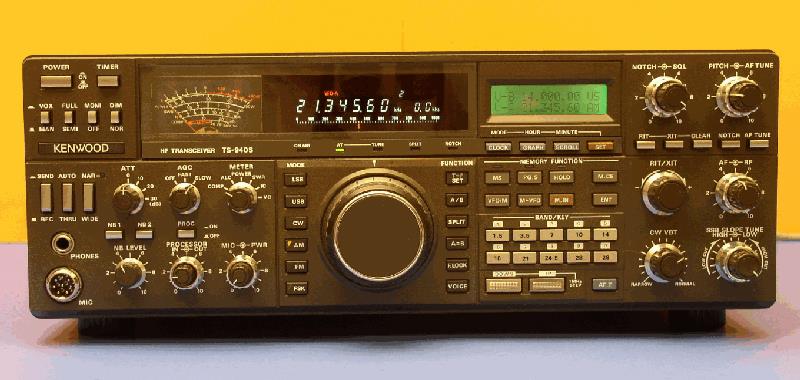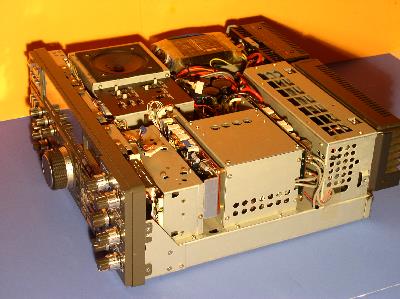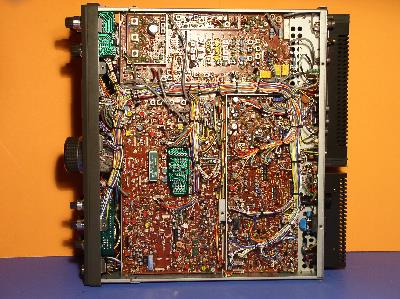Unlike its hybrid predecessors, the Kenwood TS-940S is an all solid state HF transceiver with an optional built in automatic antenna tuner (AT). It transmits on the amateur radio bands from 160 to 10 meters including the WARC bands and is also a general coverage receiver from 150 kHz to 30 MHz. Its modes of operation are CW, SSB, AM, FSK, and narrow-band FM. Produced starting in 1985, it remains extremely popular with serious amateur operators because of its many microprocessor controlled features and superior on-the-air performance. It is representative of Kenwood's all solid state transceivers in the 4xx and 9xx series models.
Among its features are: 100 Watt CW, FM, and FSK output, slightly more SSB peak envelope power, and 50 Watt AM carrier output; a broad band solid state power amplifier requiring no tuning when changing operating frequency; automatic antenna matching up to 3:1 VSWR (if installed); high dynamic range receiver with excellent sensitivity; all mode squelch; IF notch filter; CW variable bandwidth (the optional CW filter is hardly needed); SSB variable bandwidth with independent low and high slope cutoff; bright digital display; 40 memories; frequency scanning; CW audio peaking filter; dual mode noise blanker; compression speech processing to increase SSB average power; dual virtual VFOs for split frequency operation; transmit and receive incremental tuning (XIT and RIT); selectable AGC decay; full or semi break-in CW; CW side tone monitor; VOX; and accurate metering of critical parameters. Computer interface software is available for the TS-940S.
A typical TS-940S transceiver will actually output 150 watts or more in CW mode, but CW power output should be held to no more than 110 Watts. The extra 1.4 dB (a needle width on your contact’s S-meter) is not worth the risk of damaging the final transistors. SSB peak envelope power will exceed that, of course, with no ill effect so long as the average power is kept to about 100 Watts. While alignment of the TS-940S is tedious and requires lab quality test equipment, once properly aligned it will operate reliably for years if treated with respect.




